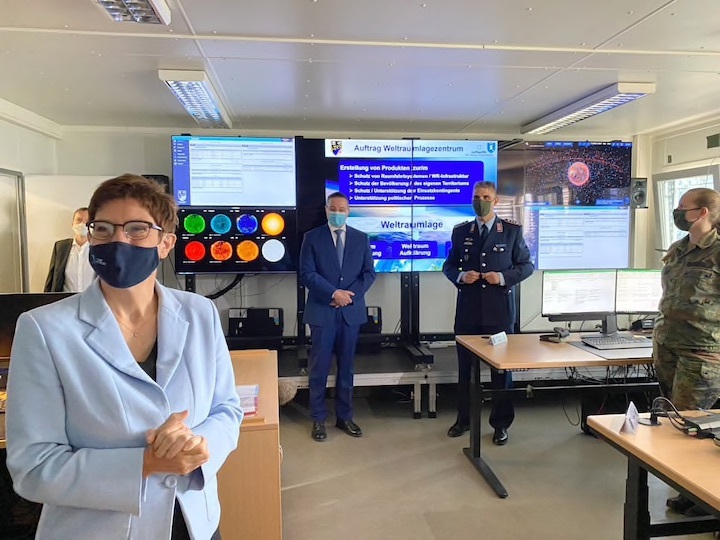PASING, Germany — On a balmy June afternoon, members of the defense and space industries, regional lawmakers, and other observers gathered just outside of Munich, Germany, to witness the opening of new space company Mynaric’s first serial production facility.
The company, which launched in 2009 as a spinoff from the German Aerospace Center, will build laser communication equipment at scale out of its 1,600-square-meter facility. Per the company, Mynaric’s announced contracts for hardware delivery are currently all for U.S.-based customers, including the Defense Advanced Research Projects Agency and the Space Development Agency. A few memoranda of understanding have been signed with customers in Europe and the rest of the world, a spokesperson said.
That situation is illustrative of many “new space” companies based in Germany. NATO allies like the United States and France are dedicating evermore resources to military space assets; notably, both Washington and Paris have separated some of their space-related bureaucracies away from their airborne military branches, with the new U.S. Space Force and the French Space Command, respectively.
Germany, on the other hand, has articulated the importance of space, but has yet to put many actual euros behind the statement, observers say. That comes in part from Berlin’s longstanding investments in the automotive and machining sector — where much of the government’s research and development funds go — and an ongoing reluctance to dedicate more resources to the country’s military budget.
But German-based companies like Mynaric and microsatellite launcher Isar Aerospace are betting that, in the long run, Germany and other European governments will understand the value of their products — not just for the commercial market but also for government and defense uses.
“Google is easy to use. Using satellites isn’t quite as easy, yet,” Mynaric CEO Bulent Altan said at the opening event of the production facility.
Mynaric is counting on that bet: Officials announced plans to produce 2,000 units per year by using a diversified supply of commercial off-the-shelf components as well as specific proprietary, built-to-print components selected for their scalability and redundancy.


/cloudfront-us-east-1.images.arcpublishing.com/mco/CYFNGLTI6FHKBC57QIJ23MXY2Q.jpg)